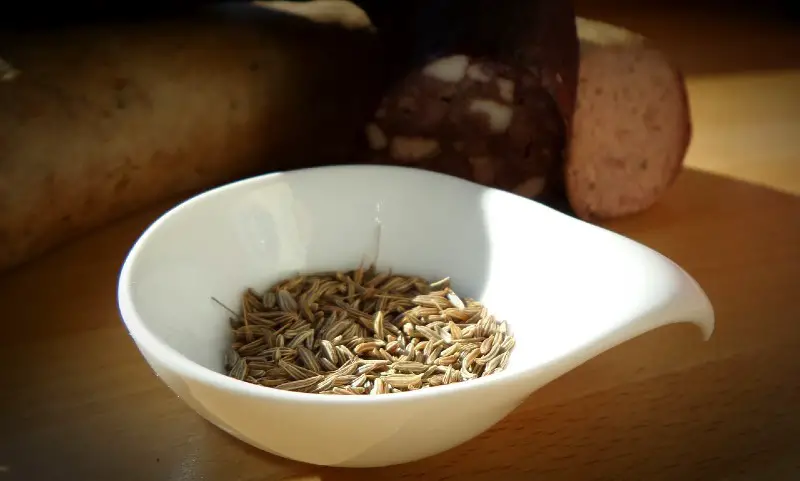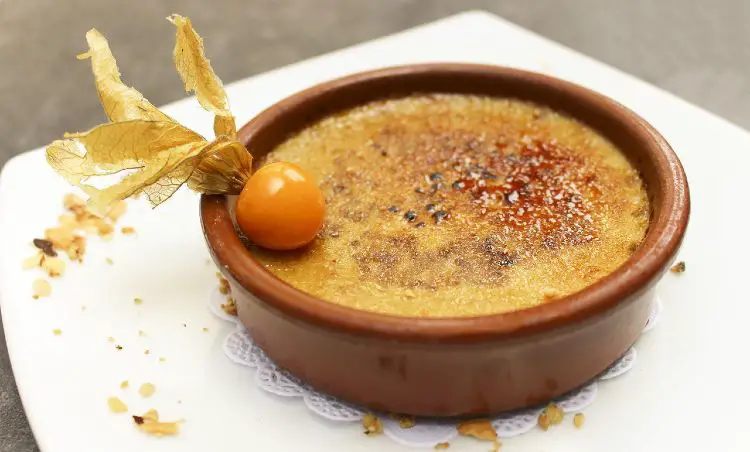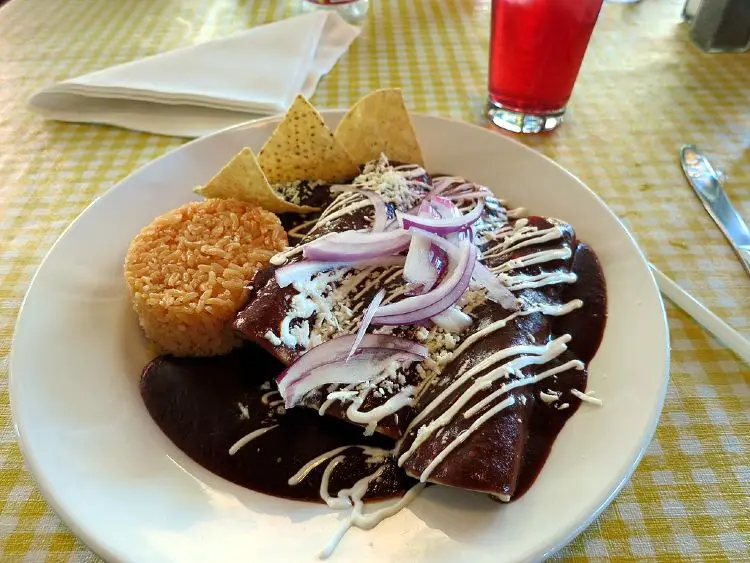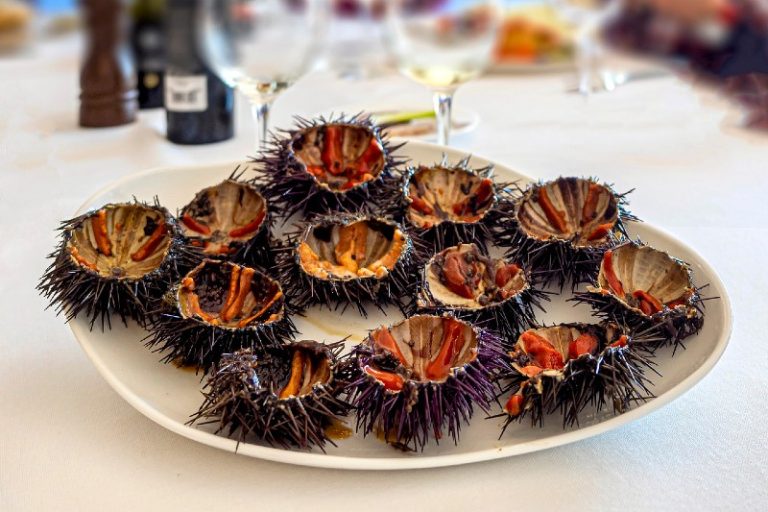Caraway Seeds vs Fennel Seeds: Unveiling The Mystery of These Look-Alike Spices
When it comes to spices, Caraway and Fennel often occupy similar spaces in our minds – and sometimes even in our spice racks. Both derived from plants belonging to the Apiaceae family, these two seeds have found their way into a wide variety of culinary and medicinal applications.
However, despite their similar origins and occasional overlapping usage, Caraway and Fennel are distinct in several key aspects.
The common confusion between Caraway and Fennel usually stems from their somewhat similar appearance and flavor profile.
At a quick glance or sniff, one might easily be substituted for the other, especially for those who are not frequent users or aficionados of these spices.
This mix-up can lead to unexpected results in both cooking and medicinal preparations.
Understanding the differences between Caraway and Fennel is crucial for anyone who wants to master the subtleties of cuisine or tap into the full benefits of these seeds in herbal remedies.
Whether you’re an aspiring chef, a home cook, or someone interested in natural medicine, this article aims to demystify these two fascinating spices, guiding you through their unique characteristics, uses, and benefits.
Caraway Seeds vs Fennel Seeds Key Differences
| Attribute | Caraway | Fennel |
|---|---|---|
| Physical Appearance | Smaller, crescent-shaped, dark brown | Larger, oval-shaped, greenish or yellowish-brown |
| Plant Origin | Carum carvi, biennial | Foeniculum vulgare, perennial |
| Flavor Profile | Earthy, nutty, citrus hints, slightly peppery | Sweet, anise-like, aromatic |
| Common Culinary Uses | German, Hungarian, and Scandinavian cuisines (sauerkraut, goulash, bread) | Italian, Indian, and Middle Eastern cuisines (sausages, curries, spice blends) |
| Medicinal Uses | Digestive aid, antispasmodic, sometimes used for respiratory issues | Digestive aid, anti-inflammatory, sometimes used for menstrual discomfort |
| Best Paired With | Pork, beef, lamb, cabbage, potatoes, carrots | Chicken, fish, tomatoes, olives, bell peppers |
| Substitutes | Anise seeds, cumin, fennel seeds, dill seeds | Anise seeds, caraway seeds, licorice root, coriander seeds |
Physical Characteristics
Caraway
Caraway seeds are small, crescent-shaped, and have a somewhat darker brown color. They usually measure around 2 to 3 mm in length. The seeds have distinct ridges along their surface, which give them a slightly textured appearance.
Plant Origin
Caraway seeds come from the Carum carvi plant, a biennial herb that is a member of the Apiaceae family. The plant typically grows up to a height of two feet and has feathery leaves and small white or pink flowers that eventually give way to the seeds.
Fennel
Fennel seeds are somewhat larger than Caraway seeds, usually around 4 to 8 mm in length. They are greenish or yellowish-brown in color and are more oval in shape compared to the crescent form of Caraway. Like Caraway, Fennel seeds also have ridges, but they are often less pronounced.
Plant Origin
Fennel seeds are harvested from the Foeniculum vulgare plant, another member of the Apiaceae family. The plant itself is a hardy perennial herb that can grow up to six feet tall. It has finely divided, feathery leaves and produces yellow flowers, from which the seeds are harvested.
Flavor Profiles
Caraway
Caraway seeds have a complex flavor profile that combines elements of warmth, sweetness, and a slight peppery bite. The taste is often described as earthy and nutty, with a hint of citrus and anise. This unique blend of flavors gives Caraway its signature taste, making it instantly recognizable to those familiar with it.
When it comes to aroma, Caraway seeds exude a warm, spicy scent with undertones of mint and anise. The aroma is generally strong and can easily dominate a dish if used in large quantities.
Fennel
Fennel seeds offer a flavor that is sweeter and more aromatic compared to Caraway. The taste is predominantly similar to anise or licorice, with a mild sweetness that makes it versatile in both sweet and savory dishes. Some people also detect a slight note of grass or hay, adding to its complexity.
Culinary Uses
Caraway
Caraway seeds are often found in a range of European and Middle Eastern cuisines. They are a staple in German cooking, notably in sauerkraut and various kinds of bread. They are also commonly used in Hungarian goulash, Irish soda bread, and in Scandinavian dishes like meatballs. Furthermore, Caraway seeds are sometimes used to flavor cheeses, liqueurs like Kümmel, and even in some dessert dishes.
Fennel
Fennel seeds are widely used in Italian, Indian, and Middle Eastern cuisines. They often appear in Italian sausages, Indian spice blends like garam masala, and in various kinds of curries. In desserts, Fennel seeds are sometimes used in cookies and cakes, and they are even eaten as an after-meal digestive and breath freshener in some cultures.
Suitable Substitutes
Caraway
- Anise Seeds: Although sweeter, anise seeds can mimic the licorice-like flavors found in caraway.
- Cumin: Offers a somewhat similar earthy and spicy profile but lacks the sweet undertones.
- Fennel Seeds: In a pinch, fennel can be used but will impart a sweeter, more anise-like flavor.
- Dill Seeds: These offer a somewhat similar texture but have a unique, somewhat tangy flavor.
Fennel
- Anise Seeds: Almost identical in flavor but slightly sweeter.
- Caraway Seeds: Can be used when you want a less sweet, more earthy tone.
- Licorice Root: Suitable for desserts and beverages, imparts a very sweet, anise-like flavor.
- Coriander Seeds: Provide a somewhat similar texture and a citrusy flavor but lack the sweetness of fennel.
Spices and Ingredients That Pair Well
Caraway
- Meats: Pork, beef, and lamb often work well with caraway.
- Vegetables: Cabbage, potatoes, and carrots are traditionally flavored with caraway in many cuisines.
- Other Spices: Garlic, onion, paprika, and juniper berries can complement the complex flavors of caraway.
Fennel
- Meats: Chicken and fish are often seasoned with fennel, especially in Mediterranean cuisines.
- Vegetables: Pairs excellently with tomatoes, olives, and bell peppers.
- Other Spices: Works well with garlic, thyme, and basil for a range of aromatic dishes.
FAQs
Are Caraway and Fennel seeds the same?
No, although they are commonly confused due to their similar appearance and anise-like flavor notes, they come from different plants and have distinct flavor profiles and culinary uses.
How do Caraway and Fennel seeds differ in flavor?
Caraway: Earthy, nutty, with a hint of citrus and a slightly peppery taste.
Fennel: Sweet and aromatic, predominantly anise-like in flavor.
Can I substitute Caraway seeds for Fennel seeds, and vice versa?
Yes, you can, but be mindful of the difference in flavor profiles. Caraway is more earthy and complex, whereas fennel is sweeter and more aromatic.
What are some common dishes that use Caraway seeds?
Caraway seeds are often found in dishes like sauerkraut, goulash, and various breads, particularly in German, Hungarian, and Scandinavian cuisines.
What are some common dishes that use Fennel seeds?
Fennel seeds are commonly used in Italian sausages, Indian curries, and spice blends like garam masala.
What are some spices that pair well with Caraway and Fennel seeds?
Caraway: Works well with garlic, onion, paprika, and juniper berries.
Fennel: Complements garlic, thyme, and basil effectively.
What should I keep in mind when cooking with Caraway and Fennel seeds?
Both spices are potent, so start with a small amount and adjust according to taste. Also, consider the dish you are making; for example, caraway’s earthiness may suit hearty stews, while fennel’s sweetness may be better for lighter, aromatic dishes.




